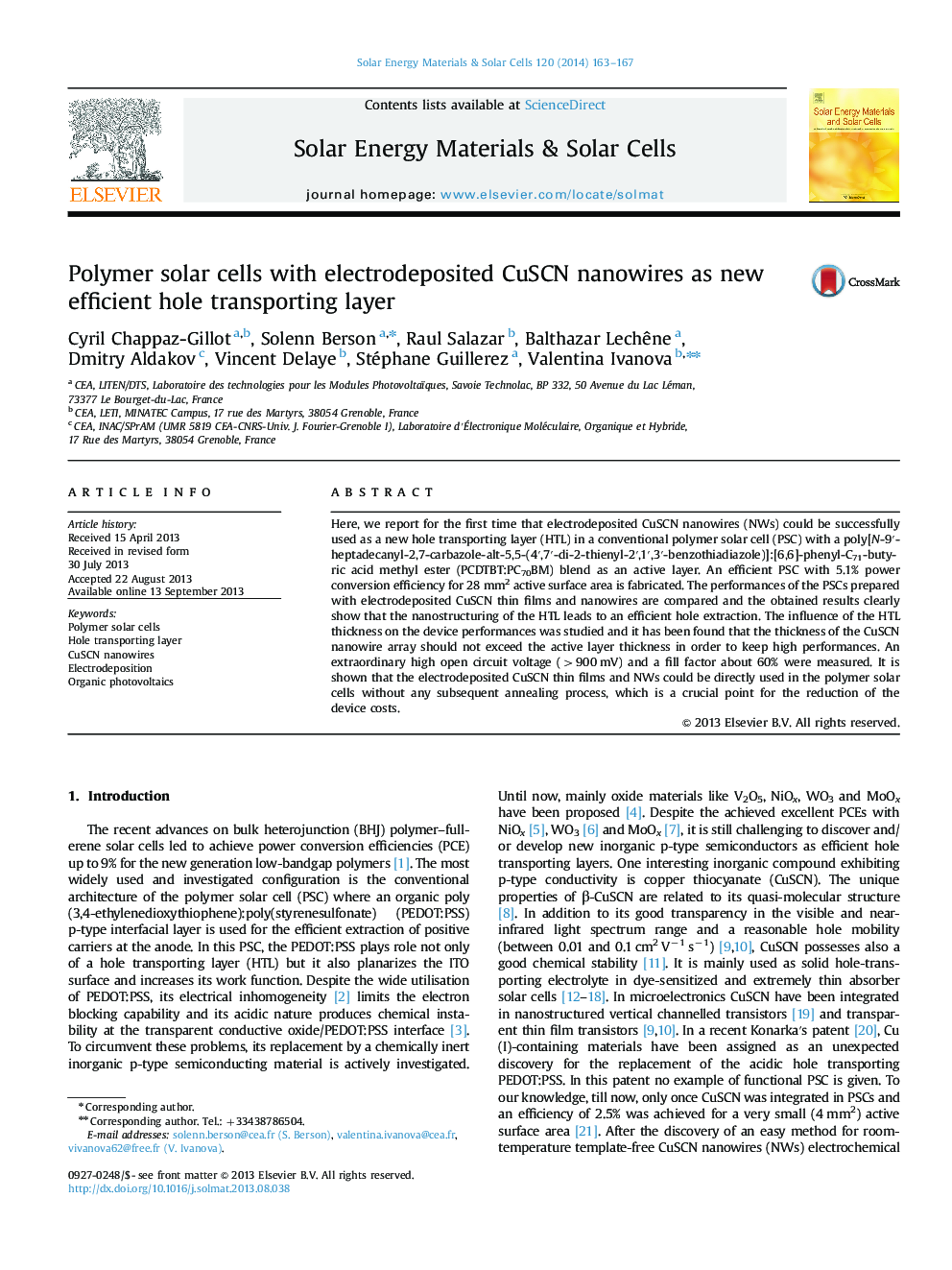| Article ID | Journal | Published Year | Pages | File Type |
|---|---|---|---|---|
| 10248698 | Solar Energy Materials and Solar Cells | 2014 | 5 Pages |
Abstract
Here, we report for the first time that electrodeposited CuSCN nanowires (NWs) could be successfully used as a new hole transporting layer (HTL) in a conventional polymer solar cell (PSC) with a poly[N-9â²-heptadecanyl-2,7-carbazole-alt-5,5-(4â²,7â²-di-2-thienyl-2â²,1â²,3â²-benzothiadiazole)]:[6,6]-phenyl-C71-butyric acid methyl ester (PCDTBT:PC70BM) blend as an active layer. An efficient PSC with 5.1% power conversion efficiency for 28Â mm2 active surface area is fabricated. The performances of the PSCs prepared with electrodeposited CuSCN thin films and nanowires are compared and the obtained results clearly show that the nanostructuring of the HTL leads to an efficient hole extraction. The influence of the HTL thickness on the device performances was studied and it has been found that the thickness of the CuSCN nanowire array should not exceed the active layer thickness in order to keep high performances. An extraordinary high open circuit voltage (>900Â mV) and a fill factor about 60% were measured. It is shown that the electrodeposited CuSCN thin films and NWs could be directly used in the polymer solar cells without any subsequent annealing process, which is a crucial point for the reduction of the device costs.
Related Topics
Physical Sciences and Engineering
Chemical Engineering
Catalysis
Authors
Cyril Chappaz-Gillot, Solenn Berson, Raul Salazar, Balthazar Lechêne, Dmitry Aldakov, Vincent Delaye, Stéphane Guillerez, Valentina Ivanova,
